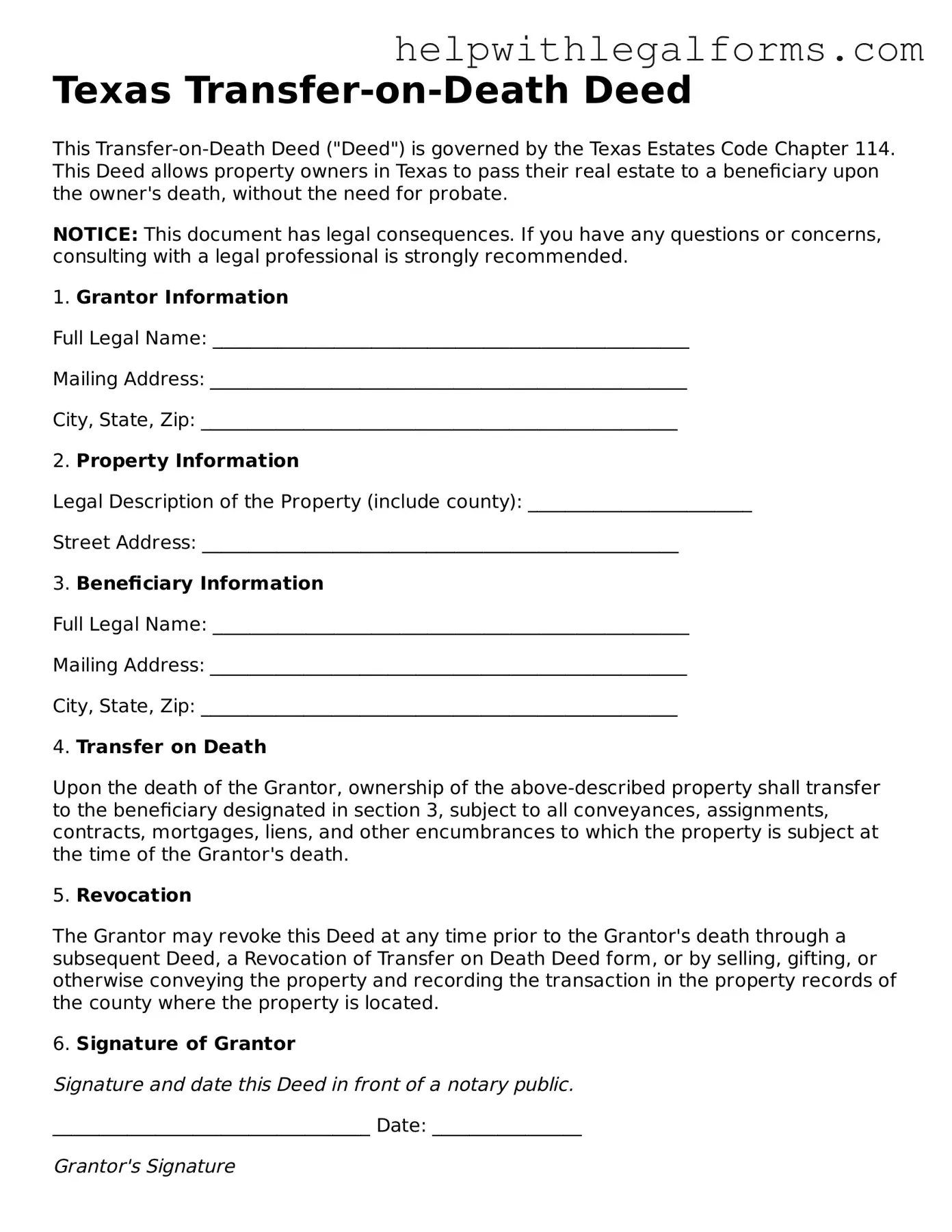Texas Transfer-on-Death Deed
This Transfer-on-Death Deed ("Deed") is governed by the Texas Estates Code Chapter 114. This Deed allows property owners in Texas to pass their real estate to a beneficiary upon the owner's death, without the need for probate.
NOTICE: This document has legal consequences. If you have any questions or concerns, consulting with a legal professional is strongly recommended.
1. Grantor Information
Full Legal Name: ___________________________________________________
Mailing Address: ___________________________________________________
City, State, Zip: ___________________________________________________
2. Property Information
Legal Description of the Property (include county): ________________________
Street Address: ___________________________________________________
3. Beneficiary Information
Full Legal Name: ___________________________________________________
Mailing Address: ___________________________________________________
City, State, Zip: ___________________________________________________
4. Transfer on Death
Upon the death of the Grantor, ownership of the above-described property shall transfer to the beneficiary designated in section 3, subject to all conveyances, assignments, contracts, mortgages, liens, and other encumbrances to which the property is subject at the time of the Grantor's death.
5. Revocation
The Grantor may revoke this Deed at any time prior to the Grantor's death through a subsequent Deed, a Revocation of Transfer on Death Deed form, or by selling, gifting, or otherwise conveying the property and recording the transaction in the property records of the county where the property is located.
6. Signature of Grantor
Signature and date this Deed in front of a notary public.
__________________________________ Date: ________________
Grantor's Signature
7. Notarization
This document was acknowledged before me on (date) _______________ by (name of Grantor)___________________________________.
__________________________________
Notary Public, State of Texas
My commission expires: _______________
Instructions for Recording: After notarization, file this Deed with the county clerk's office in the county where the property is located to make it effective.
